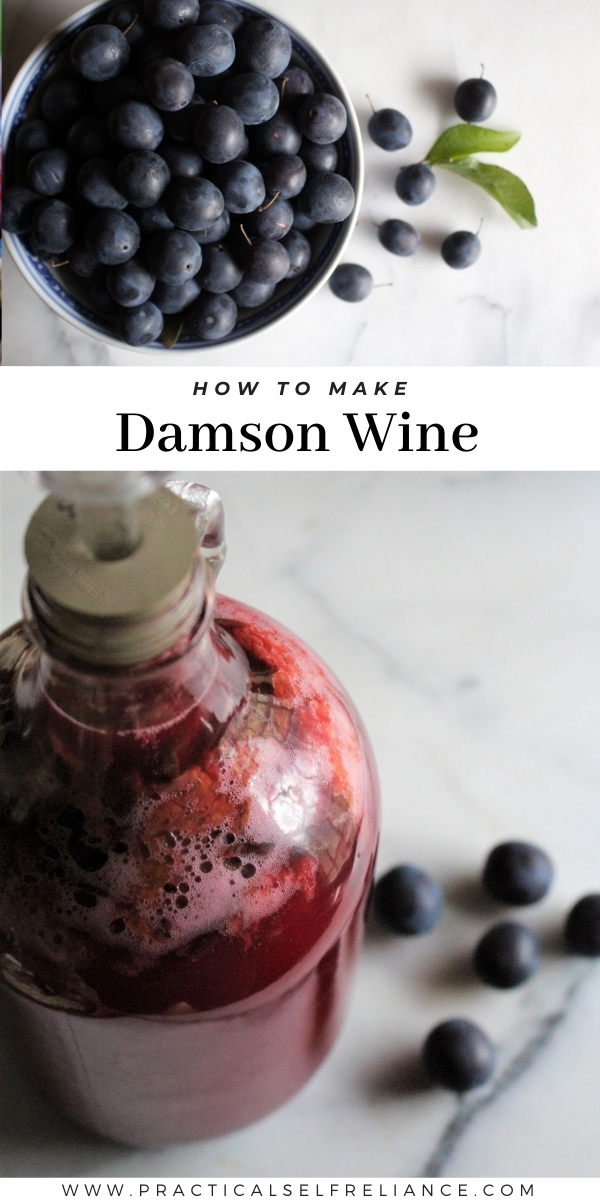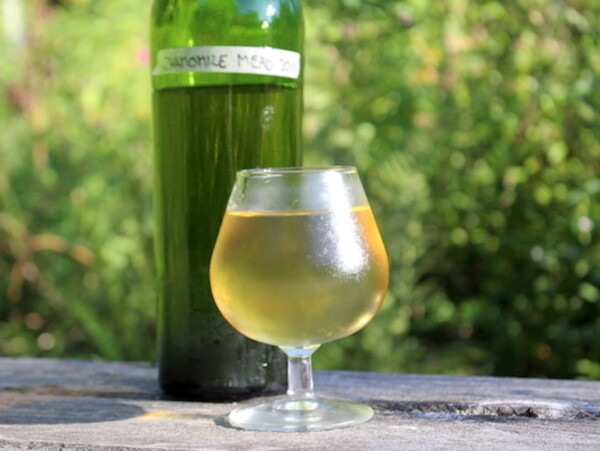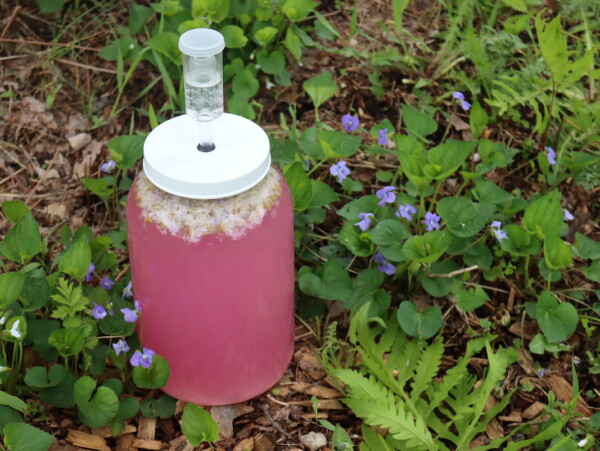Affiliate disclosure: This post may contain affiliate links. Please see our Privacy Policy.
Damson wine is a luscious homemade plum wine, crafted with full flavored damsons. It finishes more like a fine red wine than a country wine, and it’s well worth seeking out damsons to make this at home!
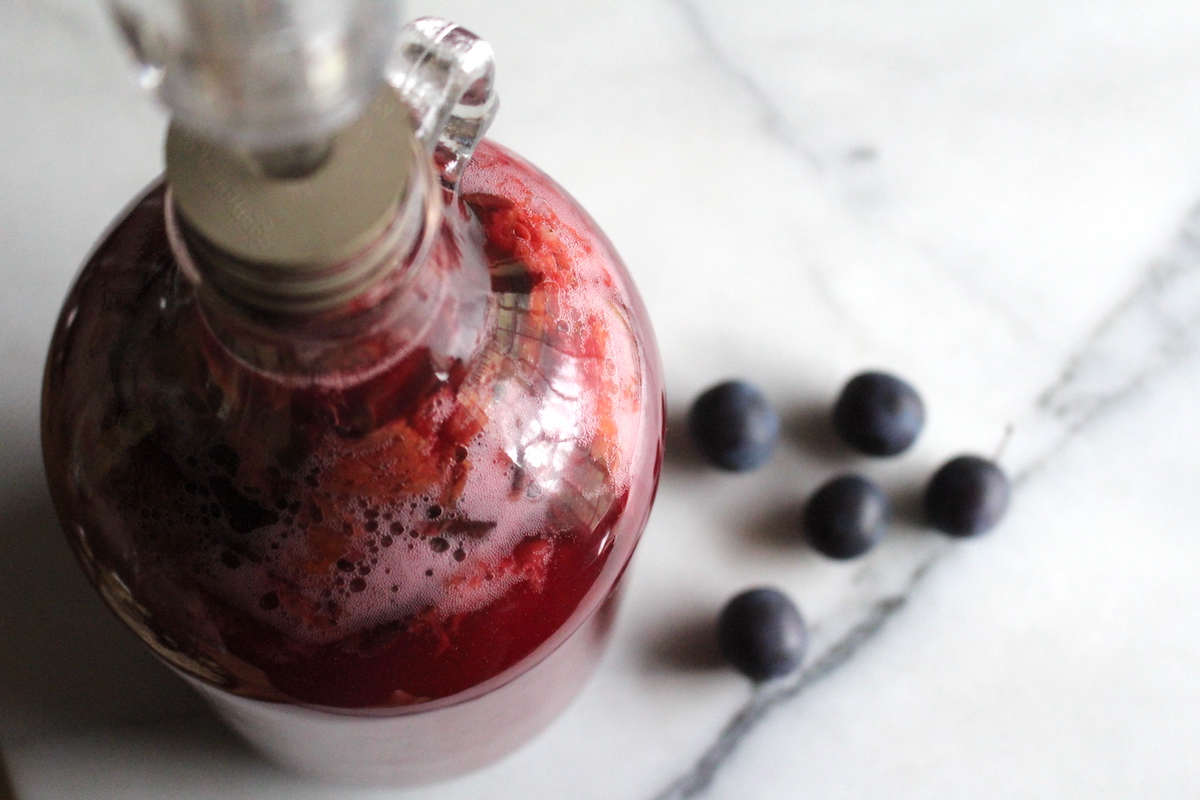
Damson plums will yield a remarkable wine, one that only betters with age. Damson wine is one of the best ways to use up a heap of these tannic and acidic fruits. Substitute honey for sugar to make damson mead!
Although similar in appearance to plums, anyone who has eaten a damson knows the flavor is vastly different. Damson plums possess higher levels of acidity and tannins than regular plums do, making them a bit of an undertaking to eat raw.
These tart, acidic aspects make damsons a perfect candidate for wine or mead making though. The high tannin content of damsons leads to a rich, full-bodied red wine that ages exceptionally well (if you can wait to drink it that is!).
The steps for making damson wine are pretty much the same as they are for making any other small-batch country wine.
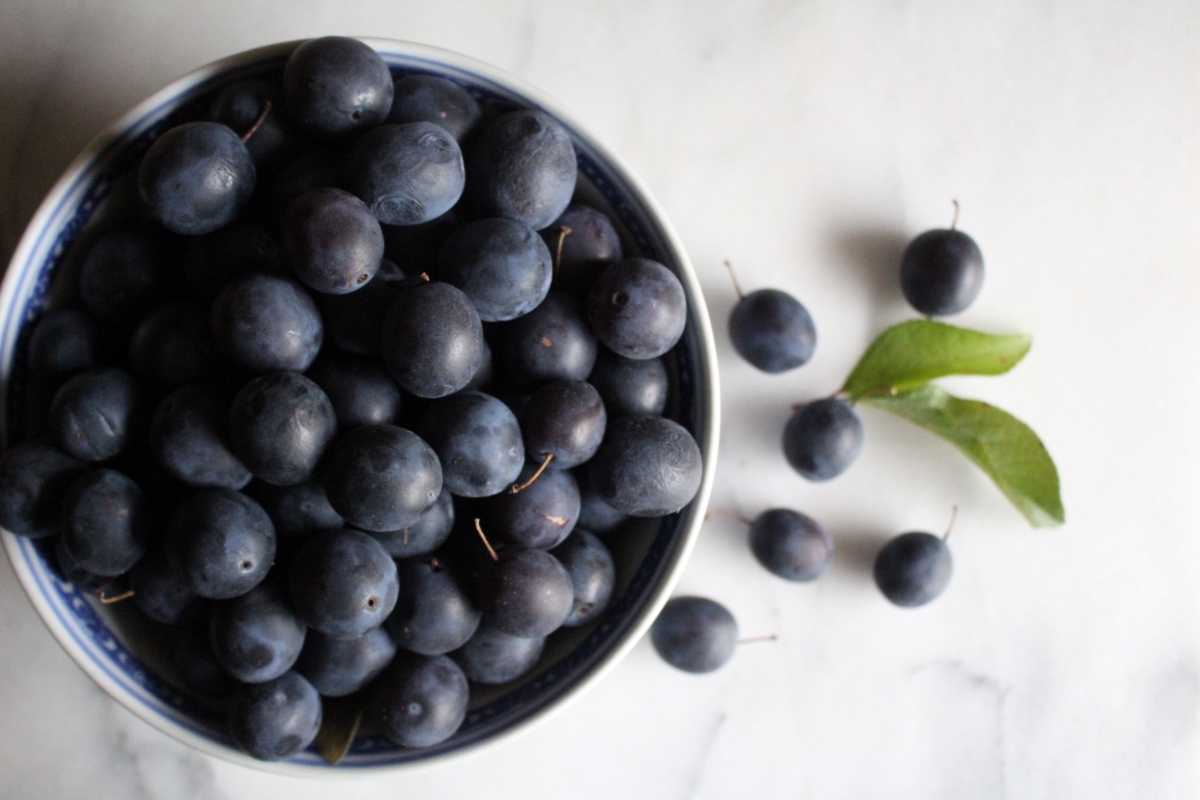
You’ll place the crushed damsons in a fermentation vessel, along with some sugar to balance out their acidity, add some water, a few other winemaking ingredients and a nice strain of wine yeast.
This will ferment for about a week until the active fermentation has run its course. Then the mixture is siphoned to a clean vessel for secondary, leaving the fruit and sediment behind. This ferment occurs more slowly, and is ideally kept in a cool and dark place for anywhere from 6 weeks to 6 months.
The wine may taste pretty astringent at this stage, but this will balance out with aging. You can still backsweeten, however, if hoping to drink sooner.
Next, the wine is bottled and allowed to age. Wait a few months and sample your creation!
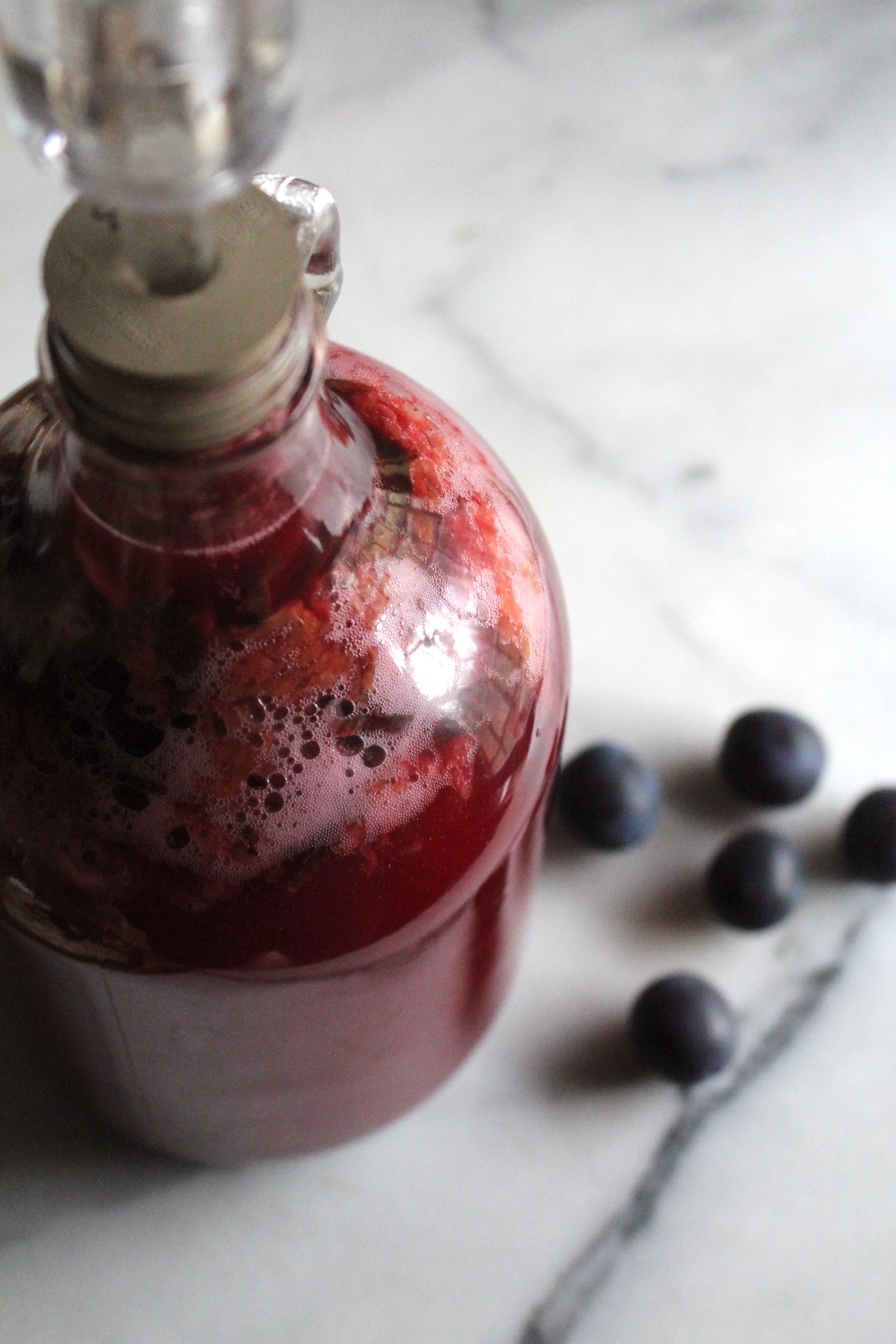
I’ve put together this wine recipe assuming that the reader is already familiar with common winemaking terms and methods. For anyone newer, these fundamental guides will help fill in the gaps and provide you with a base understanding of the process:
- Beginners Guide to Making Fruit Wines is a great place to start and will guide you through all the winemaking steps.
- How to Make Mead (Honey Wine) is just about the same, but if you’re working with honey, will tell you all the particularities.
- Equipment for Winemaking will tell you everything you need (besides ingredients) and why.
- Ingredients for Winemaking covers everything else other than yeast.
- Yeast for Winemaking is a bit more advanced. There are dozens and dozens of yeast strains to choose from. This will inform you about what to look for when picking the right one.
Ingredients for Damson Wine
To brew a batch of damson wine, you’ll first need to source your ingredients.
For those who are newer to winemaking and unfamiliar with these items, I recommend you read this primer on winemaking ingredients to help grasp the purpose of these additives.
To yield a one-gallon batch of damson wine, you’ll need:
- 4 lbs of damson plums
- 3 lbs of granulated sugar
- 1 lb sultanas
- 1 tsp Yeast Nutrient
- 1 tsp Pectic Enzyme
- Wine Yeast (preferably, Bordeaux)
For fruit, you’ll need around four pounds for a flavorful wine or mead. Besides that, you’ll need sugar to feed the yeast (or honey for damson mead).
For mead, wild honey is the most recommended. As mead recipes are generally one part honey and three parts water, you’ll need about one quart of honey for a one-gallon batch of mead.
In addition to this, sultanas will add additional flavors to the wine and help feed the yeast. Additionally, a yeast nutrient will help keep your wine yeast healthy and well-fed.
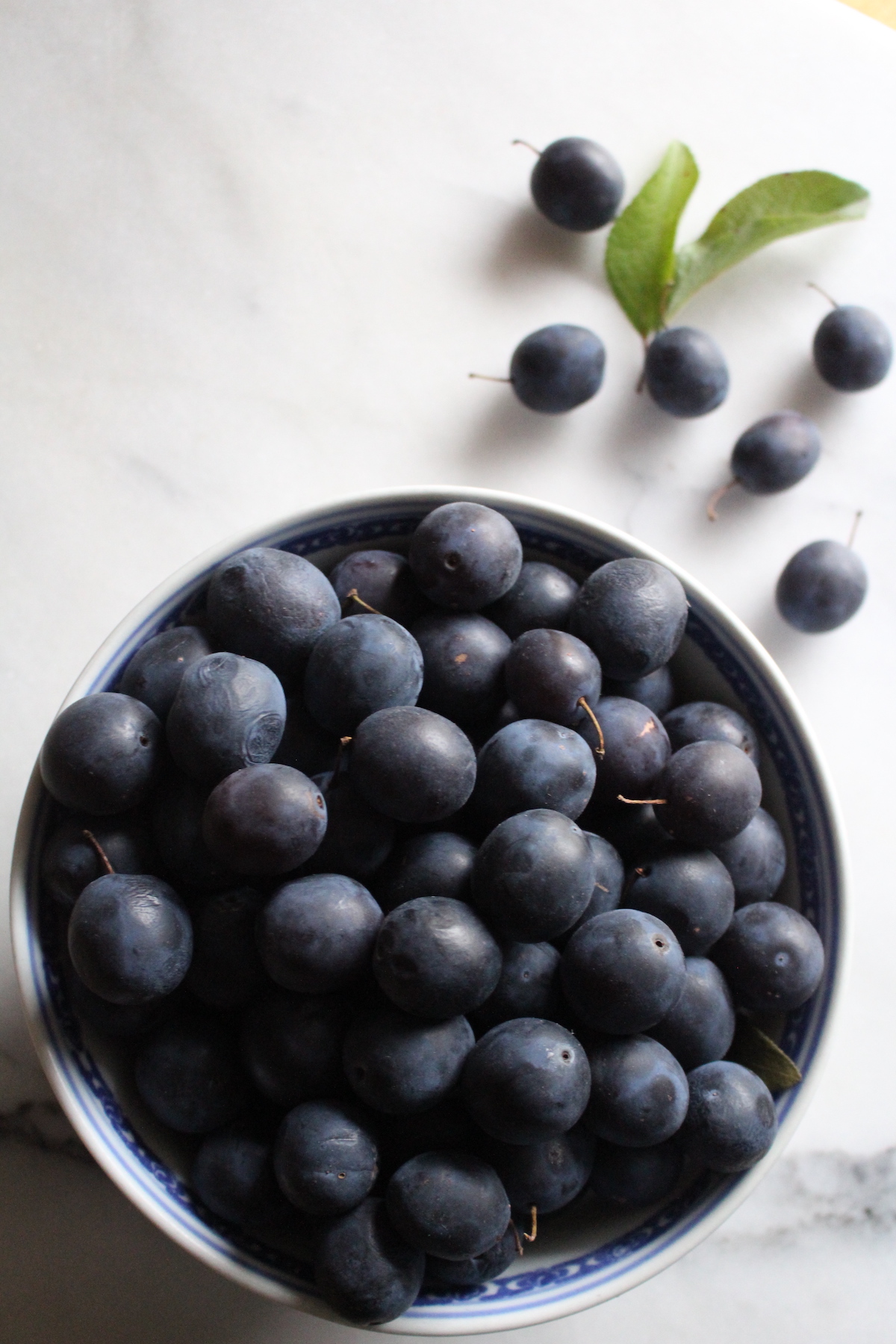
As damsons are quite high in pectin, pectic enzyme will be necessary to help break this down and clear the wine.
Although other wines call for an acid blend as well as a wine tannin, damson wine needs neither as damsons are high in both tannin and acid content. This is why they’re less pleasant than regular plums to eat raw!
As for yeast, Bordeaux yeast is an often recommended one. Bordeaux yeast is great for creating high-quality red wines and is a solid and reliable fermenter. Others recommend a champagne yeast like Lalvin EC-1118. Lalvin EC-1118 is a strong fermenter with a high alcohol tolerance (15% to 18%) that will yield a dryer wine.
In addition to these ingredients, some equipment will also be necessary:
- One-Gallon Glass Wide-Mouth Fermentation Vessel for primary fermentation
- One-Gallon Glass Narrow-Neck Carboy for secondary fermentation (often sold as a kit with a rubber stopper and water lock together)
- Rubber Stopper and Water Lock (if not included above)
- Brewing Siphon
- Wine Bottles or Flip-top Grolsch bottles
- Bottle Corker and clean, new corks for bottling the wine
- Brewing Sanitizer
Making Damson Wine
Once you’ve prepared and sterilized all your equipment, you can move on to the winemaking part.
Many choose to first freeze their damsons before using them in winemaking. This helps them to release their juices and additionally breaks down their high pectin content. To freeze damsons, half them, destone them and freeze for a week before using.
When ready, pull out your damsons and thaw them.
If using fresh damsons, destone your fruit and crush them to help break the fruit up. Place in your wide-mouth carboy along with the sultanas and add sugar (or honey for mead). Cover with heated water and stir to help the sugar dissolve.
Allow to cool, then add the pectic enzyme and yeast nutrient. Add your wine yeast last, being sure to follow the instructions on your yeast packet. Many yeasts require rehydrating first. To do so, place in a small amount of room temperature water for 10 minutes before adding to your carboy.
Add enough water to leave just 2 inches of headspace and seal with a water lock. In a day or two, an active primary fermentation should be seen bubbling away. Allow to ferment here in primary for around 4 or 5 days until the fermentation begins to slow.
It is now time to siphon the mixture to a clean carboy for secondary fermentation, leaving the fruit and sediment behind. Top with more water to bring the level up to the neck of the carboy and seal again with a water lock.
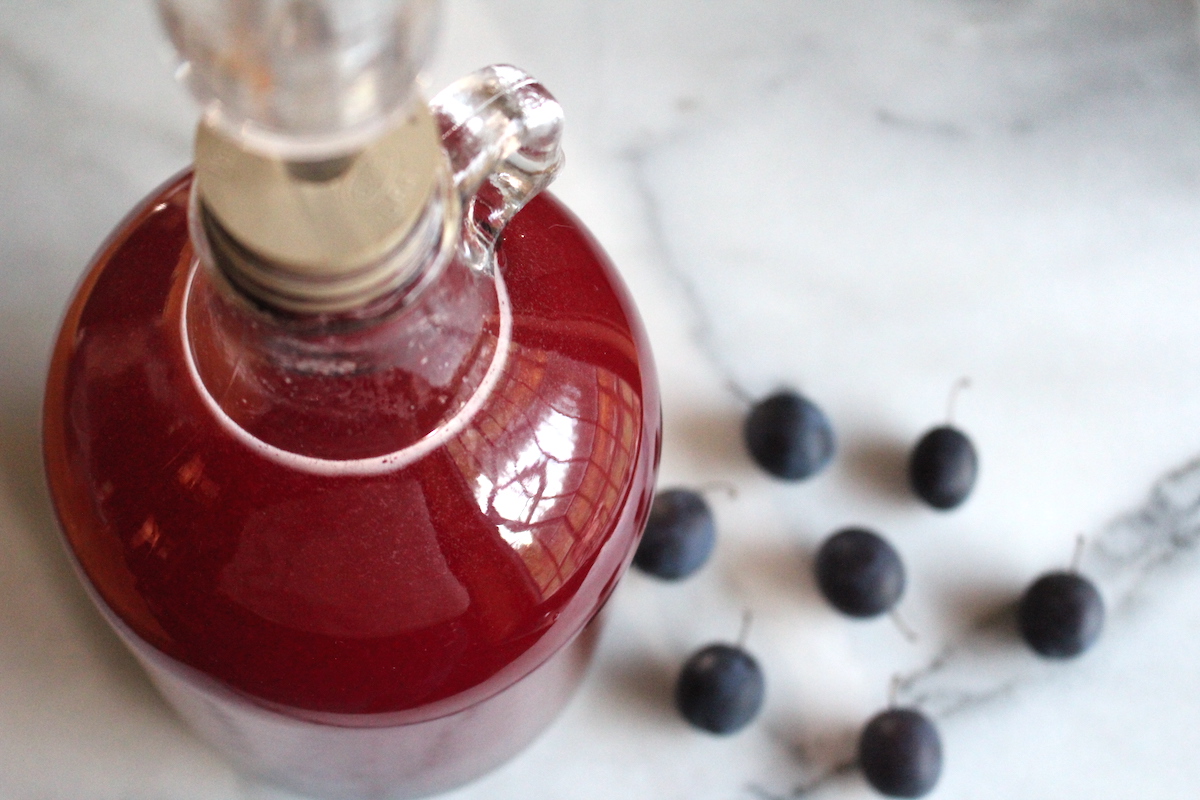
The wine should stay in secondary until it clears. An additional racking or two may be needed to help clear the sediment (leaving sediment can cause an off-flavor to develop in your wine).
For mead, 2 to 6 months are needed in secondary. This is because honey is less digestible than sugar is for wine and so the ferment is longer.
Once clear, sample your wine. Don’t worry if it tastes slightly astringent — damson wine will mellow with age. However, if the flavor seems too dry, you do have the option to backsweeten.
To backsweeten, first rack the wine to a clean fermentation vessel, then add 1 Campden tablet and ½ teaspoon potassium sorbate. Wait 24 to 48 hours for the yeast to die off and then add sugar (½ a cup per gallon of wine is a good place to begin).
Add the sugar by making a simple syrup of equal parts water and sugar, and adding this to your carboy. Seal with a water lock and let ferment another week or so before bottling.
If you do not wish to use sodium metabisulphite (Campden tablets) or potassium sorbate, you can simply add sugar and put it back into ferment until the yeast wears out and becomes inactive (usually about a month).
How do you know when you’ve reached this point? Your waterlock should stop bubbling, the wine should clear, and you should no longer see bubbles along the side of the carboy.
Do know though, that there is a possibility that if you bottle the wine and the yeast has not completely died out, your corks may be pushed out by the pressure of the wine still fermenting or the bottles may even burst under this pressure. This is more likely if you use a strong fermenting yeast like Lalvin EC-1118.
After bottling, let damson wine mature a bit before drinking. This wine truly improves with age, so waiting a year is best if you can possibly stand it.
Ways to Preserve Damsons
What other ways are there to preserve damsons? Quite a few!
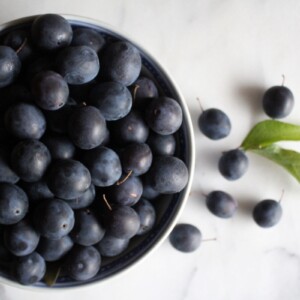
Damson Wine
Equipment
Ingredients
- 4 lbs damson plums
- 3 lbs Sugar
- 1 lb sultana raisins, golden raisins
- Water, to fill
- 1 tsp yeast nutrient
- 1 tsp Pectic Enzyme
- 1 packet wine yeast, see note
- Optional ~ Campden Tablet and Potassium Sorbate for Stabilizing, I do not use these
Instructions
- If using frozen damsons, thaw. For fresh, halve the fruit and destone it.
- Crush damsons and place them in your primary fermentation vessel. (You may use a brew bag, if desired.)
- Add sugar, sultanas and hot water. Stir to incorporate.
- Once cool, add the pectic enzyme and yeast nutrient. Add the wine yeast last, rehydrating in a bit of warm water before adding.
- Stir the mixture.
- Fill with enough water to leave 2 inches of headspace and seal with a water lock.
- Ferment in primary until most of the active fermentation has died out (about 4 or 5 days).
- Siphon to a clean fermentation vessel for secondary, leaving the fruit and sediment behind. Top with more water to fill the carboy and seal with a water lock.
- Ferment in secondary until the wine clears. Additional rackings (up to 2) may be needed to discard sediment and help clear the wine.
- At the end of secondary, sample your wine and adjust as needed (see notes for backsweetening).
- Siphon the wine into wine bottles and seal with wine corks.
- Allow to age at least 4 weeks before drinking or longer if possible.
Notes
Amount of Fruit
4 lbs of damsons are the recommended amount for making damson wine. This will ensure a full-bodied and flavorful wine.Yeast
For damson wine, try to find a wine yeast with a moderate alcohol tolerance. Bordeaux wine yeast is said to be quite nice for damson wine but can be difficult to source. Lalvin EC-1118 or champagne yeast is another nice choice. See notes within the article for the specific qualities of each yeast.Stabilizing and Back Sweetening
If the wine is too dry at the end of secondary, you can always backsweeten. To do so, rack the wine to a fresh carboy and stabilize it. Adding sugar to unstabilized wine can cause the ferment to reactivate, and bottled wine to burst under pressure (this is more likely if you use an especially strong fermenter in terms of wine yeast). Stabilize wine by adding 1 Campden tablet and ½ teaspoon potassium sorbate, and waiting 24 hours before adding sugar to ensure the yeast has died off. Create a simple syrup of equal parts sugar and water to add to your wine. Amounts vary by taste, but starting with ½ cup of sugar for 1 gallon of wine is a good place to start. See further notes within the article regarding stabilizing and back sweetening.Damson Mead
For damson mead, the recommended time spent in secondary is 2 to 6 months as honey is less digestible for yeast than sugar. To substitute honey for sugar, use about one quart (3 lbs) of honey for every 3 quarts of water.Nutrition
Nutrition information is automatically calculated, so should only be used as an approximation.
Winemaking Recipes
Thirsty for more winemaking recipes? Be sure to check out these other fruit, flower and veggie wines!
- Apple Wine
- Elderberry Wine
- Rose Wine
- Lilac Wine
- Dandelion Wine
- Greengage Plum Wine
- Pomegranate Wine
- Rhubarb Wine
